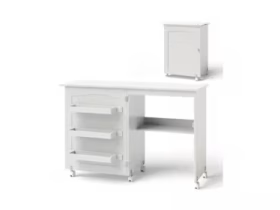The world of Linux offers countless tools for learning, entertainment, and productivity, and one of the simplest yet entertaining tools is Steam Locomotive. Installing Steam Locomotive on Red Hat can be a fun way to explore command-line interfaces and is perfect for beginners and seasoned Linux enthusiasts alike. This guide provides a step-by-step approach to installing Steam Locomotive on a Red Hat system, including troubleshooting tips and practical advice. By the end of this article, you’ll have Steam Locomotive up and running on your system.
What Is Steam Locomotive and Why Use It on Red Hat?
Steam Locomotive is a lightweight, text-based tool that runs in the Linux terminal. It’s primarily a fun utility that displays an ASCII animation of a steam locomotive chugging along your terminal screen. While its functionality might not seem essential, it’s a great tool to liven up your command-line experience or break the monotony of serious tasks.
For Red Hat users, installing Steam Locomotive can also serve as a stepping stone for learning how to install and manage small Linux packages. It’s a simple tool that’s perfect for understanding the fundamentals of Linux package management, working with the terminal, and troubleshooting basic errors.
Prerequisites for Installing Steam Locomotive
Before you begin installing Steam Locomotive on Red Hat, you need to meet a few prerequisites to ensure a smooth installation process:
- Red Hat Linux Installed: Make sure your system is running a Red Hat-based Linux distribution. This guide applies to Red Hat Enterprise Linux (RHEL) or its community version like CentOS or Fedora.
- User Permissions: You must have administrator or root privileges to install packages on your system.
- Internet Access: Steam Locomotive needs to be downloaded from the package repositories, which requires an active internet connection.
- Basic Terminal Knowledge: A basic understanding of terminal commands will make this process easier, but don’t worry if you’re a complete beginner—this guide will walk you through every step.
Update Your Red Hat System
Before installing any new software on Red Hat, it’s always a good idea to update your system. This ensures that you’re working with the latest versions of system components and that your package manager can fetch the latest version of Steam Locomotive. Follow these steps to update your system:

This command updates all the packages on your system to their latest versions. Depending on your system’s current state, this process might take a few minutes.
Check Your Internet Connection
To update your system and install packages, you need a stable internet connection. Test your connection with the following command:
bash
Copy code
ping -c 4 google.com
If you see replies from Google, your connection is active. If not, troubleshoot your network connection before proceeding.
Install a Package Manager (If Not Installed)
Most Red Hat systems come with yum or dnf as the default package managers. You can check whether a package manager is installed by running:
bash
Copy code
yum –version
or
bash
Copy code
dnf –version
If you see the version number, your package manager has already been installed. If not, consult your system administrator or install one before proceeding.
Installing Steam Locomotive on Red Hat
Once your system is updated and your package manager is ready, you can proceed to install Steam Locomotive. Use the following command:
bash
Copy code
sudo yum install sl
This command tells your system to fetch the Steam Locomotive package (sl) from the Red Hat repositories and install it on your machine. The installation process typically takes just a few seconds, as Steam Locomotive is a lightweight utility.
After the installation, you can confirm that Steam Locomotive is installed by running:
bash
Copy code
SL
You should see a delightful ASCII animation of a steam locomotive chugging across your terminal. If not, proceed to the troubleshooting section below.
Running Steam Locomotive After Installation
Running Steam Locomotive is as simple as typing the following command in your terminal:
bash
Copy code
SL
You’ll immediately see the ASCII locomotive animation. This tool is often used as a fun reminder for typographical errors since the name “sl” is a playful nod to accidentally typing “sl” instead of “ls,” the Linux command for listing files.
For additional fun, you can explore different options and parameters with the command:
bash
Copy code
man sl
This displays the manual page for Steam Locomotive, showing all the available flags and options.
Troubleshooting Common Installation Issues
Even though installing Steam Locomotive is generally straightforward, you may encounter a few issues. Here are some common problems and how to resolve them:

Command Not Found Error
If running the ls command returns an error like “command not found,” it means the installation didn’t complete successfully. Try reinstalling the package using:
bash
Copy code
sudo yum reinstall sl
Ensure that your system has an active internet connection during the process.
Network Issues
If your internet connection is unstable, the package manager may fail to fetch the necessary files. Check your connection using:
bash
Copy code
ping -c 4 google.com
Fix any network-related issues before trying the installation again.
Outdated Red Hat Version
Older versions of Red Hat may not have the Steam Locomotive package in their default repositories. To resolve this, update your system to a newer version. If upgrading is not an option, consider manually downloading the package from a trusted source and installing it with the rpm command:
bash
Copy code
sudo rpm -ivh sl.rpm
Uninstalling Steam Locomotive If Needed
If you ever want to remove Steam Locomotive from your system, simply use the following command:
bash
Copy code
sudo yum remove sl
This will completely uninstall the tool from your Red Hat system.
Why Learning Linux Commands Is Fun with Tools Like Steam Locomotive
Steam Locomotive might be a simple utility, but it’s a great example of how Linux tools can make learning enjoyable. Whether you’re a Linux beginner or an experienced sysadmin, tools like Steam Locomotive break the monotony of working with command-line interfaces. They remind us that Linux is not just powerful but also fun to use.
Moreover, playing with such tools can enhance your confidence in running commands, installing packages, and navigating the Linux environment. This foundational knowledge can later be applied to more complex tasks, such as server management or shell scripting.
The Bottom Line
Installing Steam Locomotive on Red Hat is an easy and fun way to explore Linux commands. This step-by-step guide has covered everything from updating your system to troubleshooting installation issues, ensuring that even a complete beginner can follow along. With just a few commands, you can transform your terminal into a playful space with an animated steam locomotive.
So why wait? Go ahead and install Steam Locomotive on your Red Hat system today, and enjoy a delightful twist to your Linux experience!







Leave a Reply